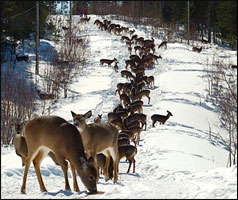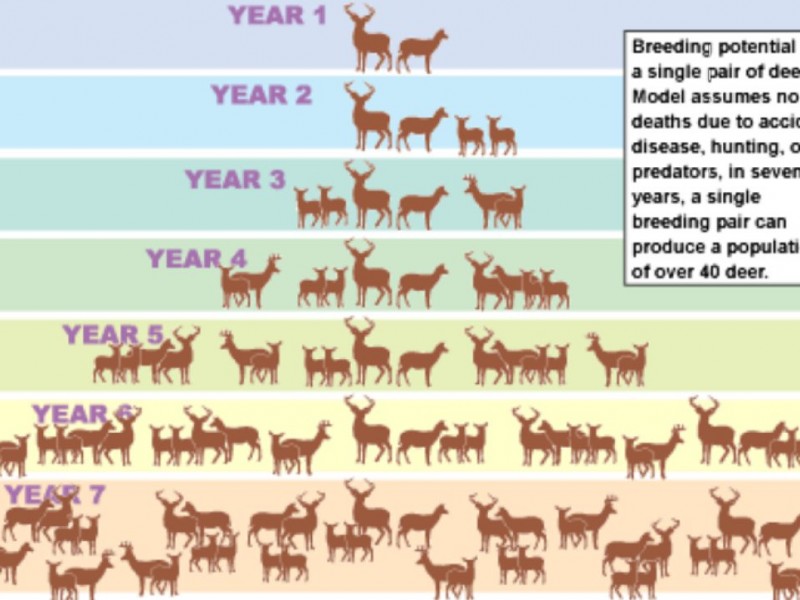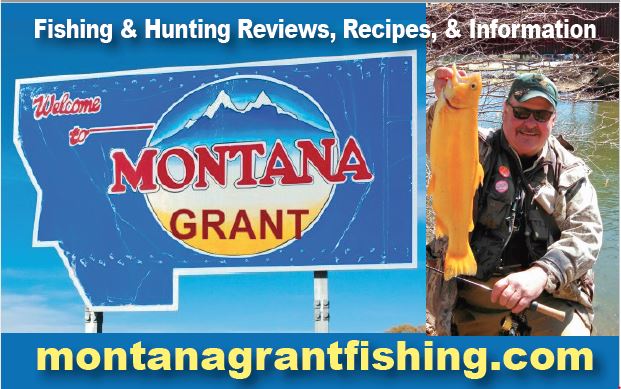28 Dec ANTLERLESS HARVEST!!!
Doe, or Antlerless hunts are becoming a common occurrence. There are several reasons for the need to increase local deer populations.
Car Strikes mean that folks can get hurt and insurance policies go up. Lobbies for Insurance Companies promote massive deer harvests. Usually, these happen in Antlerless season.

Farmers and agriculture areas need fewer deer to browse and eat their crops. They often get awarded dozens of Crop Depredation tags to reduce the threat.
Landowners often block off and restrict hunting on private land. Deer will concentrate and over browse these sanctuaries even faster. Within a relatively few seasons, the deer population will crash.
CWD, and other diseases spread quickly when too many deer are nose to nose. Once the deer are infected, dangerous die offs can occur.
The healthy size of a deer herd changes due to habitat, climate, predators, and genetics. Different areas can support more or less deer. Ecology says that if deer populations are left unchecked, Nature will find a way. Deer will eventually eat themselves out of house and home. Over crowding also means more deer-to-deer contact. As they touch noses and group up, disease can take over. With depleted food and health, deer populations can quickly crash.
In Montana, deer can get Blue Tongue! This hemorrhagic disease is spread by gnats and flies that bite the deer, in the Summer. Slowly the deer lose strength and begin to bleed internally. They search for water and almost always die. They die by the hundreds, in the same overpopulated area. I encountered this once when Pheasant hunting along the Musselshell River in central Montana. This area had a dense population of deer and the neighboring landowners refused hunting access. Little to no deer harvests took place for a decade.
Dead deer were everywhere. Many were summer bucks, still in velvet. I easily counted several hundred corpses, blue tongues hanging out of their mouths. Hunters that often went near to this area saw few deer after the die off, for several years. Gradually other deer moved into this area devoid of deer. Nature finds a way.
Harvesting late season antlerless deer is important. Proper and controlled population management is a helpful management tool. The problem is that antlerless does not mean just does. Many of these deer can be big bucks that have shed their antlers. Less cover, snow, and cold cause the deer to group up and become more vulnerable.
On a farm in Dorchester County, Maryland, I went on a late season Crop Depredation hunt. My brother and I had 32 tags to fill. The landowner wanted does removed. We set up, and the large herds of deer wandered into the field, just before dark. Some deer had antlers, but most were without. The landowner fed the deer and only trophies were harvested.
It was not uncommon to see dead mutated deer, deer covered in lymphoma growths, winter kill deer, or stunted deer, on this property. The forest edges were pruned neatly by browsing deer. If not for the corn, wheat, and soybean crops, the deer would starve. The huge area was surrounded by swamps, so the dense deer population was somewhat confined and isolated.
As the deer filed out, we began shooting. One shot per deer, out to 350 yards or so. All were antlerless and most dropped in their tracks. We hunted from modern elevated and weatherproof box blinds. My coat was off, the house was heated, Modern windows opened and closed, sandbags were on the ledge, and I sat in an office chair, and went to work. Our stands were at opposite corners, so the deer were flanked. Needless to say, many crop tags were filled in one evening. About half were not does. Some of the deer were BIG bodied shed bucks. Probably not the deer that the landowner wanted removed. Everything was legal and ethical, we followed instructions, and the population of deer was reduced.
No deer went unused. All were butchered and given to needy folks, friends, and the landowner. We certainly enjoyed full freezers. No Wanton Waste occurred. It took several trips on a Gator to transport the filled tags to the barn.
The next year of hunting saw fewer bucks. There were still plenty of does since most female deer had twins. Some small spikes and forks were seen. There were no trophy bucks to be found. The next year the landowner shut down all hunting and the population began to increase dramatically.
Deer management is not just a Fall or Winter project. Management occurs year around and hunters are the best tool for the job. Proper habitat and Fall harvests can do the job. In the Fall, bucks can easily be identified. Most good hunters can do this at short ranges, but it is hard to identify antlerless bucks, at long ranges, even with good optics. Selective and smart harvests can manage a healthy and buck abundant population for a lifetime.

Once the landowner can estimate a deer population in their area, a trained Biologist can make suggestions and recommendations. Most State wildlife agencies will offer their services for free. Having hunters help with the harvest is also essential. Place specific and safe stand sites for them to use. This will put them where you want them and ensure safety. Mentored Youth hunts ae a perfect way to train inexperience hunters for the future.
Deer populations recover quickly. Yearling does tend to have single fawns and older does tend to have twins. OLD does are often sterile. Great bucks take 2-3 years to grow a respectable rack. After 7 years, most bucks wear down their teeth and begin to degrade. Old deer do teach young deer how to survive but at some point, selective harvest is a good idea.
Many Biologists suggest that a healthy deer herd needs one buck to mate with 20-25 does. Ironically, they say the same ratio for pheasants. The truth is that there is no one best recommendation. Habitats are different. Some can maintain healthy herds of more or less deer.
Maryland’s deer population nearly went extinct. In the mid 1900’s the only deer found in Maryland were in small areas of Garrett County. Aberdeen Proving grounds, and other military bases, began stocking several sub species of deer along with some private landowners on the Eastern Shore. Habitat destruction, deforestation, and over harvests were to blame. Some of these deer came from Northern states and Canada. Sika deer came from Japan, and Fallow Deer came form Europe. Soon deer began to make a recovery and in the late 1900’s deer seemed to be abundant throughout the state. The first legal, licensed deer season in Maryland saw fewer than 100 deer checked in! Today the harvest numbers in the hundreds of thousands.
Habitat can also recover quickly. With smart and planned field and forest management, a deer utopia is only a few seasons away. Without quality management, habitat can become a deer wasteland for decades. Deer are perhaps the most researched critter in North America. If you need answers, a quick Google search will supply them. There is also a book called “White-tailed Deer” authored by the Wildlife Management Institute. This text offers more answers than you can think up questions for.
Deer Management can ensure healthy herds of deer. Without hunting and continual smart management, deer herds will fluctuate wildly. In many cases the deer herd will grow faster than the habitat can recover, and the downward cycle will continue.
Hunt harder and Smarter!
Montana Grant
For more Montana Grant, hunt him at www.montanagrantfishing.com.


